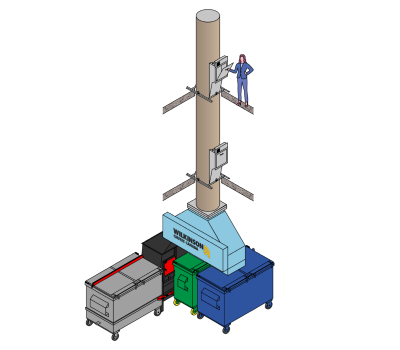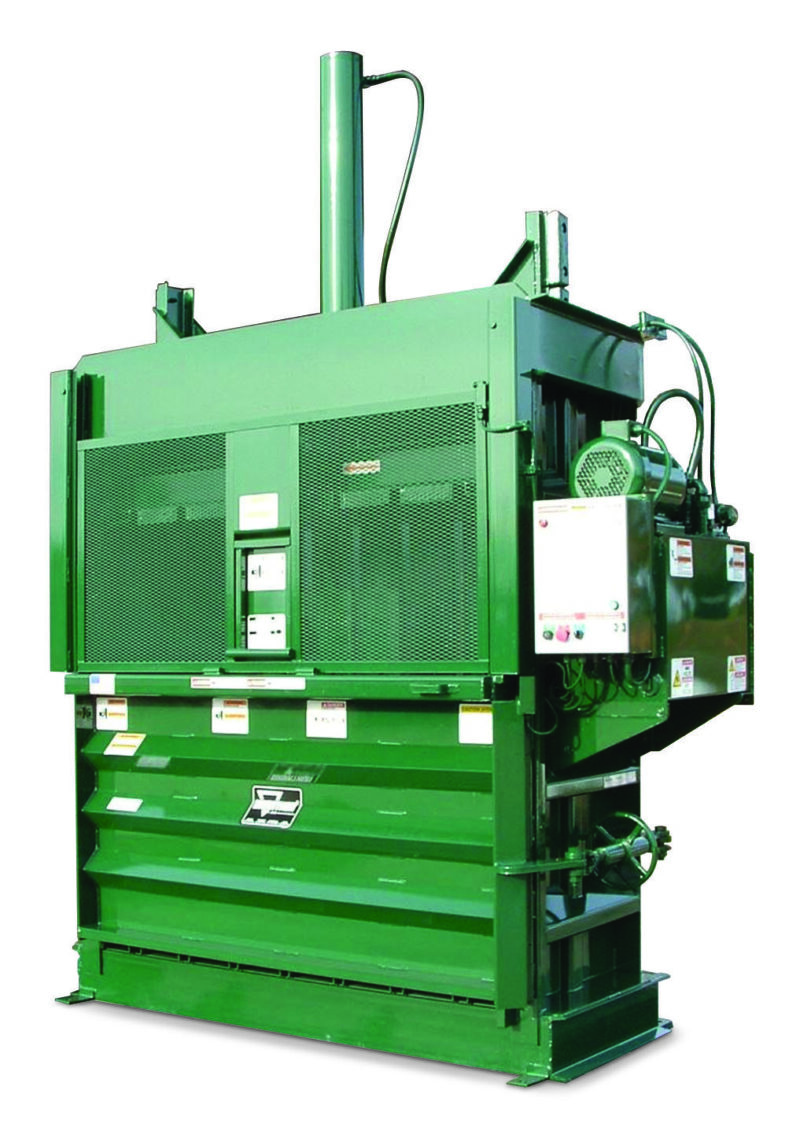Rent a Baler for Hassle-Free Industrial Waste Handling
Rent a Baler for Hassle-Free Industrial Waste Handling
Blog Article
Assessing the Cost-Effectiveness and Ecological Benefits of Spending in Advanced Waste Equipment for Services and Organizations
The choice to purchase sophisticated waste tools is significantly essential for companies intending to boost both their financial and environmental performance. Evaluating the cost-effectiveness of such investments exposes potential for substantial cost savings, especially with decreased operational expenses and boosted resource administration. The ecological advantages-- such as minimized garbage dump use and lower exhausts-- contribute to an extra sustainable operational structure. Yet, the ramifications of this investment expand beyond mere numbers, elevating crucial concerns regarding long-lasting stability and governing conformity. As companies browse these intricacies, the path ahead comes to be interesting.
Understanding Advanced Waste Devices
Advanced waste equipment includes a selection of innovative innovations designed to boost waste management processes effectively. This tools includes automated sorting systems, compactors, shredders, and advanced reusing machinery, all targeted at boosting effectiveness and reducing environmental influence. The main objective of innovative waste devices is to streamline the collection, processing, and disposal of waste products, thereby decreasing labor expenses and enhancing functional effectiveness.
One significant modern technology is making use of smart waste bins outfitted with sensing units that monitor waste levels and enhance collection routes. This not just minimizes unneeded pickups but also decreases fuel consumption and greenhouse gas emissions. Additionally, advanced shredders and compactors promote the reduction of waste volume, which is vital for optimizing landfill area and enhancing recycling initiatives.
Moreover, the assimilation of fabricated knowledge and equipment understanding in waste administration systems permits for boosted information analytics, leading to notified decision-making and improved source allotment. By using these advanced innovations, organizations and organizations can attain significant enhancements in waste monitoring processes, eventually causing much better sustainability results and conformity with regulatory requirements.
Price Analysis of Financial Investment
Assessing the price analysis of investment in innovative waste equipment is essential for companies seeking to improve their waste management techniques. An extensive expense analysis entails assessing both the preliminary funding investment and continuous functional expenditures related to acquiring and maintaining such equipment. This includes not only the acquisition rate however likewise setup expenses, training for personnel, and prospective downtime throughout the shift duration.
Organizations have to likewise consider the various sorts of innovative waste tools readily available, such as compactors, shredders, and recycling systems, each with distinct prices frameworks. Additionally, the economic ramifications of devices performance should be examined, as much more reliable systems may bring about reduced waste disposal fees and lower resource usage.
In addition, possible financing resources and motivations, such as federal government gives or tax obligation debts, can significantly impact the general cost evaluation. By performing a thorough examination of these variables, organizations can make enlightened choices that line up with their sustainability goals while ensuring an audio economic investment (baler rental). Inevitably, a thorough expense analysis lays the structure for recognizing the financial viability and tactical benefits of purchasing advanced waste monitoring innovations

Long-Term Financial Savings Possible
Purchasing innovative waste devices not just involves an ahead of time economic commitment but likewise unlocks to substantial long-term savings potential. Organizations and companies that implement such modern technology can anticipate to see a decrease in operational prices in time. Advanced waste tools commonly improves waste monitoring processes, leading to reduced labor costs and boosted efficiency.
By automating check my site waste sorting and processing, organizations reduce the requirement for manual labor, enabling team to concentrate on more value-added tasks. Furthermore, improved waste monitoring systems can minimize the volume of waste that winds up in garbage dumps, which subsequently reduces disposal costs and prospective regulatory penalties associated with waste mismanagement.
In addition to guide price financial savings, companies can additionally experience enhanced earnings chances. Reusing programs can produce income from the sale of retrieved materials. In addition, a commitment to sophisticated waste monitoring can improve a firm's reputation, attracting ecologically conscious consumers and clients, which may bring about increased market share.
Environmental Influence Analysis
How do advanced waste monitoring systems contribute to ecological sustainability? The application of these systems allows for the efficient separation of recyclable products, which can considerably decrease the volume of waste directed to land fills, consequently reducing methane discharges and various other damaging toxins associated with waste disintegration.
Additionally, advanced waste monitoring solutions are created to lower energy intake and enhance operational effectiveness. As an example, energy-efficient equipment not only lessens overall energy use yet also reduces greenhouse gas emissions, lining up with international sustainability goals. The adoption of these systems can cultivate a culture of ecological responsibility within companies, encouraging workers to engage useful reference in sustainable methods.
Carrying out a thorough ecological impact analysis of these systems exposes their prospective advantages, consisting of boosted air and water quality, site here biodiversity conservation, and boosted community health. Eventually, buying innovative waste management technology stands for a calculated strategy to achieving long-lasting environmental sustainability while advertising financial viability.
Situation Studies and Real-World Examples
Numerous situation research studies highlight the performance of sophisticated waste administration systems in promoting environmental sustainability across various markets. As an example, a leading production business embraced automated waste sorting innovation, which resulted in a 40% decrease in land fill waste within the very first year. This investment not just enhanced functional performance yet likewise significantly decreased disposal expenses, showcasing a solid return on financial investment.
In the friendliness market, a significant hotel chain implemented an innovative food waste food digestion system that converted organic waste into tidy energy. This campaign minimized waste result by 50% and offered the resort with a lasting energy source, highlighting both economic and environmental advantages.

These real-world examples demonstrate that organizations can achieve considerable price savings while improving their sustainability profiles with tactical financial investments in advanced waste administration technologies. As these case researches reveal, the assimilation of ingenious waste services is not only feasible however likewise crucial for modern business aiming to line up with ecological criteria and customer assumptions.
Conclusion
Financial investment in sophisticated waste equipment arises as a tactical choice for organizations looking for to enhance cost-effectiveness and ecological sustainability. By automating waste sorting and leveraging smart technologies, organizations can accomplish considerable decreases in operational expenses and land fill contributions.
Report this page